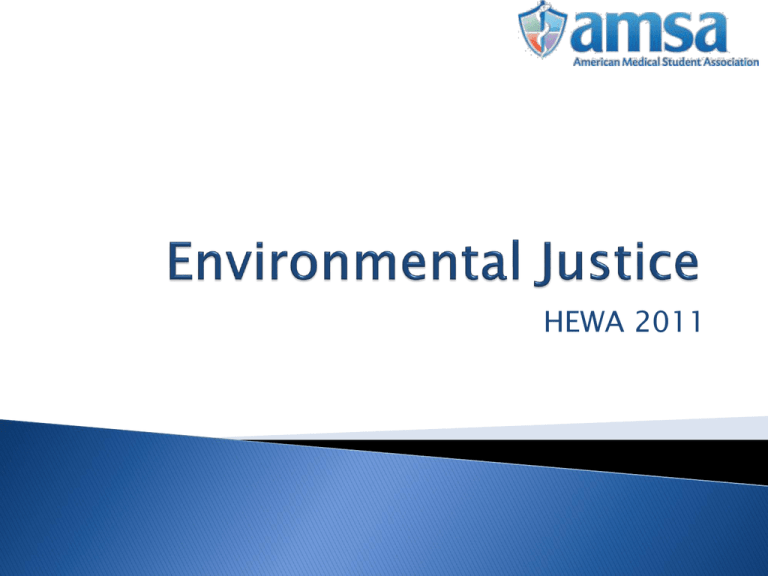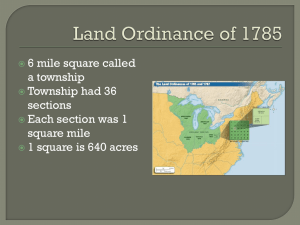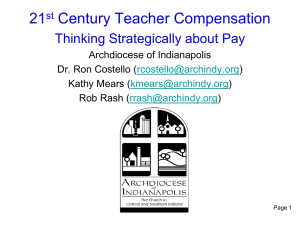2011 Environmental Justice
advertisement

HEWA 2011 What do you think “Environmental Justice” means? ◦ What does it entail? How about “Environmental Racism?” ◦ What are its implications? Environmental Justice is a new term, arising in the 1980s. It can be considered part of the broader ‘environmental movement’ that started in the 1960s. ◦ However, it is a distinct discipline in many ways. Environmental Justice is the fair treatment and meaningful involvement of all people regardless of race, color, national origin, or income with respect to the development, implementation, and enforcement of environmental laws, regulations, and policies…It will be achieved when everyone enjoys the same degree of protection from environmental and health hazards and equal access to the decision-making process to have a healthy environment in which to live, learn, and work. (US EPA, 2010) What does that mean? ◦ The community, where the average American spends 90% of their life, is the basis of health. ◦ When the government, corporations, or other people take advantage of a community and its environment, the health burden increases. What does that mean? ◦ More often than not, minority and people of low socioeconomic status are the ones affected by this victimization. ◦ This victimization based on race or SES is what defines environmental racism. Why do you think that certain populations fall victim to environmental racism? According to the sociological and public health literature, four major factors appear the root causes of why minority and/or low socioeconomic status populations are victims of environmental racism: ◦ ◦ ◦ ◦ Little education about the hazards Lack of financial resources to move or affect change Poor ability to organize Less political influence or sway in land-use decisions The environmental justice movement is believed to have begun in 1982 in Shocco Township, NC. It was in Shocco Township, that a landfill was built to dump polychlorinated biphenyls (PCBs). PCBs cause: ◦ Birth defects ◦ Hepatotoxicity ◦ Rashes and acne Why was Shocco Township chosen instead of the other towns in Warren County, NC? There were many other sites available in the other municipalities. The other available sites for the Warren County PCB Landfill were in significantly richer neighborhoods with larger Caucasian populations, whereas Shocco Township was: ◦ 69% African American ◦ 20% of the residents fell below the national poverty lines. When the decision was announced that Shocco Township would be the site for the Warren County PCB landfill, environmental racism took center stage in the national spotlight for the very first time. Despite the national media attention and protests, the landfill was still built in Shocco Township. It took 25 years of protests and lawsuits to finally close the landfill and begin its cleanup. This is not an isolated incident. ◦ Pacific Gas & Energy’s dumped chromium into the groundwater of Hinkley, CA, an incident made famous by the 2000 film, Erin Brockovich. ◦ The Harlem Exhaust Study lent strong evidence to the notion that children living in Harlem compared to the rest of Manhattan inhale significantly high levels of diesel exhaust, leading to asthma and other poor respiratory outcomes. Why do you think that is? Though anyone can be affected by poor environmental conditions, the victims are typically minority populations and those of low SES. In particular, two populations in the United States bear the greatest burden. ◦ African Americans ◦ Latinos • • Many people in the African American community are of low SES. As such, many are hampered by poor living conditions and a financial inability to move. – Many African American communities are victimized. • In urban areas, many households live in old apartment buildings. – These types of buildings often have not been abated of lead and asbestos by their landlords. – They are also disproportionately affected by highways and other transit routes, causing respiratory illness. – In suburban and rural areas, these communities are often next to industrial plants, which often emit hazardous and carcinogenic chemicals. Many Latino populations in the United States are also of low SES and face many similar problems that African American communities do as it pertains to environmental justice. ◦ This is especially compounded by the English language barrier – which limits understanding of government proposals and educational campaigns. Of particular note in the Latino population is the high prevalence of migrant farm workers, who are often exposed to toxic pesticides. ◦ Among this population, there is also a fear of protesting these conditions. Many migrant farm workers are undocumented. The fear of losing their livelihood also exists. Can you think of some exposures that victims of environmental racism would be at a higher risk of experiencing? Smog – Smog is a catchall term for a variety of gases and aerosolized solids that are breathed in. Common place in urban centers, industrial zones, and near landfills and incinerators, it is a mixture of groundlevel ozone (O3), nitrogen dioxide, sulfur dioxide, and suspended solids less than 10 m. Smog inhalation causes: ◦ Increased airway responsiveness, ◦ Airway inflammation, ◦ Increased respiratory illnesses, and ◦ Increased risk of mortality in people with respiratory and cardiovascular comorbidities Lead – Recent estimates place the number of American children aged 1-5 with high blood lead levels at over 300,000! Often found in urban centers, where lead paint in old, lower-rent housing units are simply covered by additional layers of paint rather than removed. Over time, the paint peels and cracks, forming dust that contains the lead of earlier paint coats. This dust is aerosolized and inhaled. Furthermore, lead imparts a sweet, vanilla-like taste to the dust and paint chips. Infants and toddlers thus ingest the lead en masse. Lead toxicity causes: ◦ Behavioral and learning disabilities in children, ◦ Lead encephalopathy, leading to confusion, coma, and seizures, ◦ Acute and chronic gastrointestinal symptoms, ◦ Renal failure, ◦ Distal motor neuropathy, ◦ Male infertility and spontaneous abortion in women, and ◦ Anemia. Pesticides – There are over 1,000 active pesticide chemicals registered by the US Environmental Protection Agency. They span from rodenticides to antimicrobials. Excessive exposure to pesticides stems typically from occupation – with Latino farm workers being the most at risk. Additional exposures come from: Living near industrial pesticide plants, Overuse in lowerincome urban housing, which comes as a result of building managers failing to prevent infestations by non-chemical means. Pesticides have been linked to: ◦ Increased airway reactivity, ◦ Birth defects, ◦ Azoospermia, ◦ CNS dysfunction, ◦ Liver damage, and, ◦ Kidney damage. Dioxins –Short for polychlorinated benzodioxins. Byproducts of a number of industrial processes including the synthesis of chemicals and the incineration of plastics and fossil fuels. Similar to the PCBs seen in Shocco Township. Dioxin poisoning causes: ◦ Persistent acne (Chloracne), ◦ Increased risk for certain sarcomas, ◦ Birth defects, ◦ Central and peripheral neuropathies, ◦ Endocrine dysfunction, ◦ Female reproductive dysfunction. [To be left blank for the local HEWA coordinator to fill in.]











